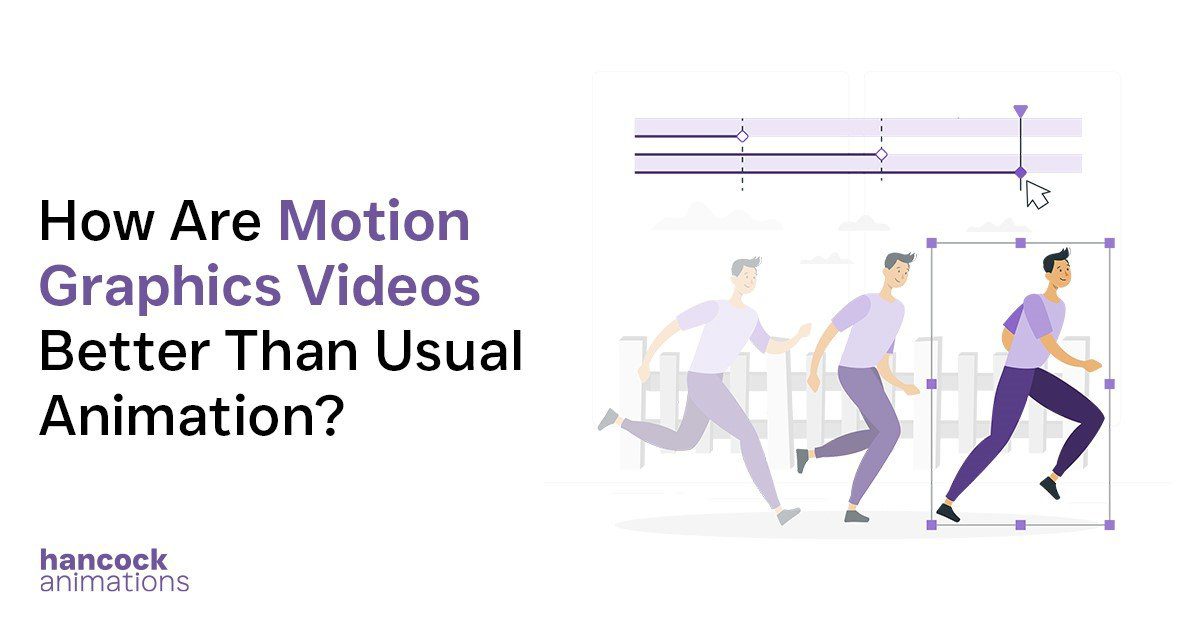How Are Motion Graphics Videos Better Than Usual Animation?

Cartoons are the typical example people assume when animation is discussed. However, animation is much more than that. Whether moving or still characters, animation has diversified its industry.
One of the best examples is motion graphics. Motion Graphics are now the most trending marketing strategy. They have been proven to work much better than usual animation, considering that brands must get users’ attention in less than 30 seconds to sell.
Motion graphics are not just about whimsical characters. They utilize design principles, animation, and sometimes even real-life footage to create visually engaging content that can be applied in many contexts.
Whether you’re grappling with complex data, introducing a new product, or simply looking to spice up your marketing materials, motion graphics offer a versatile solution that could be the answer you’ve been searching for.
Intrigued? Read on to explore the key advantages of motion graphics and how they can elevate your videos beyond the usual strategies of traditional animation.
Understanding the Difference Between Motion Graphics & Animations
While animation and motion graphics bring images to life, they serve distinct purposes and utilize different approaches. Here’s a breakdown to clarify the differences:
What is Animation?
Animation is a broad term encompassing the creation of moving images. It breathes life into drawings, characters, and objects, giving them the illusion of movement. Animation has a rich history, dating back to the early days of cinema with techniques like:
Traditional Animation
This “cel animation” involves hand-drawn characters on transparent sheets (cels) that are layered and photographed one frame at a time, creating the illusion of movement when played back in sequence. “Snow White and the Seven Dwarfs” and many classic Disney films are prime examples.
Stop-Motion Animation
This technique involves physically manipulating objects frame-by-frame, creating movement when the frames are played back. Think of the iconic Wallace and Gromit Claymation films or stop-motion animation used in movies like “Coraline.”
Computer Animation (CG Animation)
With the advent of computers, animation entered a new era. CG animation uses specialized software to create 3D models, characters, and environments that are then animated and rendered digitally. Films like “Avatar” and “Toy Story” showcase the incredible possibilities of CG animation.
What are Motion Graphics?
Motion graphics, on the other hand, is a subset of animation with a specific focus on design and information delivery. Here’s what sets it apart:
Design Elements
Motion graphics heavily utilize graphic design principles, incorporating elements like shapes, typography, charts, and icons. Think of dynamic infographics, animated logos, or explainer videos with a focus on visual clarity.
Informative Nature
Motion graphics’ primary purpose is to communicate information effectively. They aim to explain concepts, present data, or tell a story in a clear and engaging way. They don’t necessarily involve complex character development or elaborate narratives like traditional animation.
Think of it this way,
Animation is a broad umbrella encompassing all forms of moving imagery, while motion graphics occupy a specific space within that umbrella, focusing on design elements and clear, concise communication.
Why Motion Graphics Should Be Your Brand's Secret Weapon
In today’s crowded marketplace, grabbing attention and effectively communicating your brand message is crucial for standing out. This is where motion graphics come in, offering a dynamic and engaging way to connect with your audience.
Motion graphics combine animation, graphic design, and sound to create visually compelling content that transcends static images and text.
They’re essentially marketing Swiss army knives, adaptable to various formats and purposes. Here’s how motion graphics can supercharge your brand:
Cut Through the Noise
People are bombarded with information every day. Static images and text often get lost in the shuffle.
With their animation and visual storytelling, motion graphics can break through the clutter and grab attention in a way that resonates.
Simplify Complexity
Does your brand offer a complex product or service? Motion graphics can break down intricate concepts into bite-sized, easily digestible pieces.
Imagine explaining a new financial product with a clear, animated infographic highlighting key features and benefits.
Make Data Memorable
Data reports and charts can be notoriously dull. Motion graphics can breathe life into dry statistics by using animation and storytelling elements.
Think of showcasing sales trends with dynamic, animated charts that leave a lasting impression.
Boost Engagement
Let’s face it: static presentations can put audiences to sleep. Motion graphics can inject dynamism, turning presentations into interactive experiences.
Imagine a product launch with a captivating motion graphic showcasing your product’s features visually.
Versatility is King
The beauty of motion graphics lies in their flexibility. They can be seamlessly integrated into various content types, from explainer videos and social media posts to marketing materials and even trade show presentations.
This allows you to create targeted content that resonates across different platforms.
Faster Than Traditional Animation
Traditional animation, while powerful, can be time-consuming and expensive. Motion graphics, on the other hand, can be created more efficiently using pre-made elements, 2D animation techniques, and specialized software. This allows you to develop high-quality content without breaking the bank.
Leveraging the power of motion graphics can create a more engaging and memorable brand experience. Motion graphics can help your brand stand out from the crowd in a world filled with static noise.
Where Can You Utilize Motion Graphics vs. Traditional Animation?
Motion graphics and traditional animation are both powerful tools for creating visuals, but they excel in different areas:
Motion Graphics:
Focus: Explaining concepts, data visualization, presentations, marketing videos, social media content, user interfaces (UIs)
Style: Often uses clean lines, geometric shapes, and text alongside some illustration or 3D elements.
Pros: Easier and faster to produce than traditional animation, versatile, and adaptable to many uses.
Cons: It can be less emotionally engaging than traditional animation.
Traditional Animation:
Focus: Storytelling, character development, creating narratives, cartoons, and explainer videos with a human touch.
Style: Wide variety of styles, from hand-drawn characters to painted backgrounds.
Pros: Highly engaging and expressive, can create a strong emotional connection with viewers.
Cons: More time-consuming and expensive to produce than motion graphics.
Here’s a breakdown of where you might use each:
Use Motion Graphics for:
A product explainer video that showcases features with clear visuals.
A social media post with animated text and graphics to grab attention.
Lower-thirds graphics with titles and information in a news broadcast.
Animated infographics to make complex data easy to understand.
Use Traditional Animation for:
A children’s cartoon series with engaging characters and stories.
An animated commercial that uses humor or emotion to connect with viewers.
An animated music video that brings the music to life visually.
An explainer video with a character who guides the viewer through a concept.
Of course, there can be some overlap. Some motion graphics pieces might incorporate traditional animation elements, and some traditional animations might use motion graphics techniques. The key is to choose the style that best suits your project’s goals.
Where Can You Utilize Motion Graphics vs. Traditional Animation?
Motion graphics come in a variety of styles, each with its own strengths and applications:
1. 2D Animation:
Concept: Bringing drawings and illustrations to life through frame-by-frame animation.
Think of Cartoons, animated explainer videos (often with a hand-drawn aesthetic), and motion graphics that incorporate 2D elements.
Uses: Storytelling, explainer videos, character development, educational content.
2. 3D Animation:
Concept: Creating computer-generated moving images in a three-dimensional space.
Think of Feature films, video game characters, and product visualizations.
Uses: Visual effects for movies and TV, creating realistic characters and environments, showcasing products in a dynamic way.
3. UX Animation:
Concept: Animation used in user interfaces (UI) to improve the user experience.
Think of Buttons that subtly light up on hover, menus that smoothly unfold, and progress bars that animate.
Uses: Make interfaces more intuitive and engaging, guide users through interactions, and provide feedback.
4. Explainer Video:
Concept: A short video that explains a product, service, concept, or process clearly and concisely.
Think of Animated explainer videos using 2D or 3D animation, motion graphics with narration, or whiteboard explainer videos.
Uses: Educate customers, introduce new products, improve brand awareness, and simplify complex topics.
5. Typography:
Concept: The art and design of using letters, numbers, and symbols to create written language.
Think of Fonts, layouts, and text styles used in presentations, websites, and graphic design.
Uses: Enhance communication, establish brand identity, create visual hierarchy, and guide readers through information.
6. Infographics:
Concept: A visual representation of information, data, or knowledge. Often uses charts, graphs, and illustrations.
Think of Charts and graphs depicting statistics, timelines with illustrations, social media posts with data visualizations.
Uses: Present complex information in an easily digestible way, make data more engaging, and communicate trends and insights.
7. Motion Graphics:
Concept: The use of animation and graphic design to create visual content. Often uses clean lines, geometric shapes, and text.
Think of Animated logos, explainer videos with motion graphics, kinetic typography, and infographics with animation.
Uses: Explain concepts, present data, add visual interest to presentations and marketing materials, and create engaging social media content.
8. Presentations:
Concept: A slideshow used to convey information to an audience, often accompanied by a speaker.
Think of Slides with text, images, videos, and motion graphics used for business meetings, educational lectures, and conferences.
Uses: Share information, persuade or inform an audience, tell a story, showcase data and visuals.
9. GIFs:
Concept: Short, looping animations created from video clips or image sequences. Often used online.
Think of Funny reaction GIFs, short explainer animations, and social media content with a touch of animation.
Uses: Add humor or emotion to communication, capture attention online, and share simple animations easily.
Do You Need Motion Graphics for Your Brand to Market?
Motion graphics can be a powerful tool for marketing your brand, but it’s not necessarily a requirement. Here’s a breakdown to help you decide:
Benefits of Motion Graphics:
Grabs Attention: Eye-catching animation can cut through the noise of online content and stop viewers in their tracks.
Engages Viewers: Dynamic visuals and animation can hold attention longer than static images or text.
Explains Complex Ideas: Animation can break down complex information and present it clearly and engagingly.
Increases Brand Awareness: A well-designed motion graphic can leave a lasting impression and help people remember your brand.
Versatile: Motion graphics can be used for a variety of marketing purposes, from explainer videos to social media content.
Consider These Factors:
Target Audience: How does your target audience typically consume information? Are they more likely to be engaged by video or static content?
Marketing Goals: What are you hoping to achieve with your marketing campaign? Motion graphics can effectively promote brand awareness, lead generation, or product explainer videos.
Budget: Motion graphics can cost a lot, depending on the complexity of the animation. Other marketing strategies may be more cost-effective if you have a limited budget.
Alternatives to Motion Graphics:
Static Images: High-quality photos and illustrations can still be effective in marketing your brand.
Live-Action Video: Live-action video can be a good option for testimonials, behind-the-scenes content, or product demonstrations.
Text-Based Content: Well-written blog posts, articles, or social media captions can be informative and engaging.
Motion graphics can be a valuable asset to your marketing toolbox, but it’s not a one-size-fits-all solution. Consider your target audience, marketing goals, and budget to decide if motion graphics fit your brand.
Wrap Up
Motion graphics have emerged as a powerful brand tool in today’s competitive marketing landscape. While traditional animation offers artistic freedom and emotional connection, motion graphics excel at grabbing attention, explaining complex information, and boosting engagement.
But Guess what? Hancock Animations has ultimate motion graphics and traditional animation options for our precious readers like you!
Our versatility in content will allow your content to be integrated into various content formats, making your videos a valuable asset for your brand.
By understanding the strengths of both motion graphics and traditional animation, you can choose the best approach to suit your brand’s specific needs and goals.

